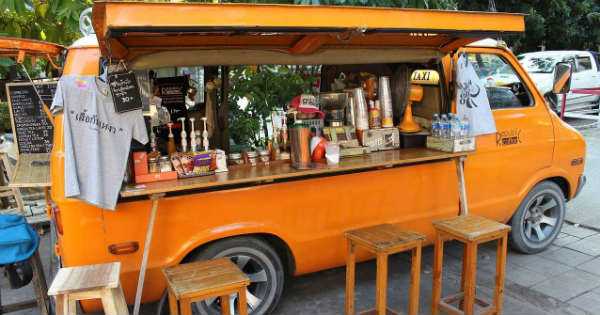A food truck requires a fantastic storefront, just like any restaurant does. Building your own food truck is a challenging venture because you must optimize the layout to fit in the same amount of equipment to operate an effective kitchen in a much smaller space. If you`re wondering how to launch your own food truck business, check out the following nine steps to get started.
#1: Pick A Food Truck Concept
Customers` decisions to shop from your truck can be significantly influenced by a well-thought-out concept and an eye-catching logo.
You`ll want to meet the local community`s needs with your food truck, but you`ll also want to share your passions with the world. After conducting some early research, select a food truck concept that combines your own style with local concerns.
From there, you may choose a name and a design that accurately captures the essence of your company.
#2: Comply with The Food Truck Licenses and Permits
Local restrictions for food trucks will impact every design choice you make. When asked what they wish they had known before starting their business, the majority of food truck entrepreneurs will mention permissions and licenses.
Make sure you know the permissions required to operate your food truck in your city, state, or province before you start designing it. Present your design plans to your local government for assessment before implementing them.
#3: Obtain Funding for Your Food Truck
Your business plan is the first stage in the finance application process for your truck. It is possible that you will require a loan to launch your food truck business, given the startup costs involved. Feel free to visit FinImpact to obtain the best possible food truck financing.
#4: Purchase A Truck
Not every truck is made the same. Consider what makes the most sense for your cuisine and business concept as you search for the ideal food truck. Food trucks can be 10 to 50 feet long, and the size significantly impacts how big your kitchen is and how many people will work for you.
Although some people might find a huge truck appealing, keep in mind that a larger food truck will have higher fuel costs, greater staffing needs, and more challenging parking. A larger operation can also generate more revenue simultaneously.
A smaller food truck may be easier to handle and cost less to run, but it will have less room for equipment and movement and probably won`t be able to produce as much as a larger truck.
Take your time and be careful when deciding which truck is best for you because these measures will impact how you proceed with each subsequent choice.
#5: Install Cooking Equipment in The Truck
Your idea will determine what equipment you need specifically. If you operate an ice cream food truck, you`ll need a commercial freezer, but the amount you need will depend on how much sales you generate. A deep fryer is necessary if you plan to serve hot empanadas, but depending on your available space, you may want to choose a countertop or floor type.
Regardless of your concept, most food trucks will require a few standard products. To help you started, below is a list of typical food truck equipment components:
- Cooktop or stove
- Oven
- Fryer
- rooftop ventilation
- Preparation desks or countertops
- Refrigerator
- Freezer
- Sink
#6: Establish Adequate Ventilation
Make sure to have adequate ventilation when designing the style and size of your food truck. For your employees to operate safely and comfortably, proper ventilation is essential.
Your ventilation needs will depend on the tools you`ll be utilizing and the products you`ll be producing. For example, heating up water for pasta doesn`t need as much ventilation as grilling meat for a sandwich.
Ultimately, examine to see if your ventilation system complies with regulations and is strong enough to accommodate the scale of your food truck.
#7: Develop Proper Drainage
Maintaining code compliance with your food truck requires proper plumbing and drainage. This involves having the appropriate water tanks for a fresh water system, gray water system, and hot water system.
Gray water is the general term for all the toxic water your food truck kitchen produces. This truly refers to anything that drains that has grease, soap, or other impurities in it.
As each city will have various requirements for where to properly dispose of greywater, please research the laws in your area.
#8: Choose A POS System
If you run a food truck, you will certainly need a mobile Point of Sale (POS) system. With these systems, you may accept credit card payments right from your truck, although you will need an internet connection.
Many food trucks will choose a cash-only approach in order to avoid relying on internet access. However, as customers are less likely to carry cash on them, this can reduce the number of customers you can serve. Owners of food trucks are choosing POS systems that enable them to accept both cash and credit.
#9: Locate a Parking Spot for the Food Truck
Most cities and municipalities have strict zoning regulations that specify where you may and cannot park your food truck. Each city will have its own requirements, so you must obtain the necessary licenses and permissions.
Downtowns, parks, and office buildings are often excellent locations to consider for food truck parking. Events, marketplaces, and festivals are all worthwhile parking spots. Also, always turn your ordering window, so it faces the sidewalk.
Conclusion
It`s not hard to understand why the food truck sector is expanding so quickly. It`s a great moment to get involved, whether you want to pursue your dream of owning a mobile restaurant or expand the scope of your current venture. Building a food truck isn`t simple, but it is definitely achievable and profitable.

